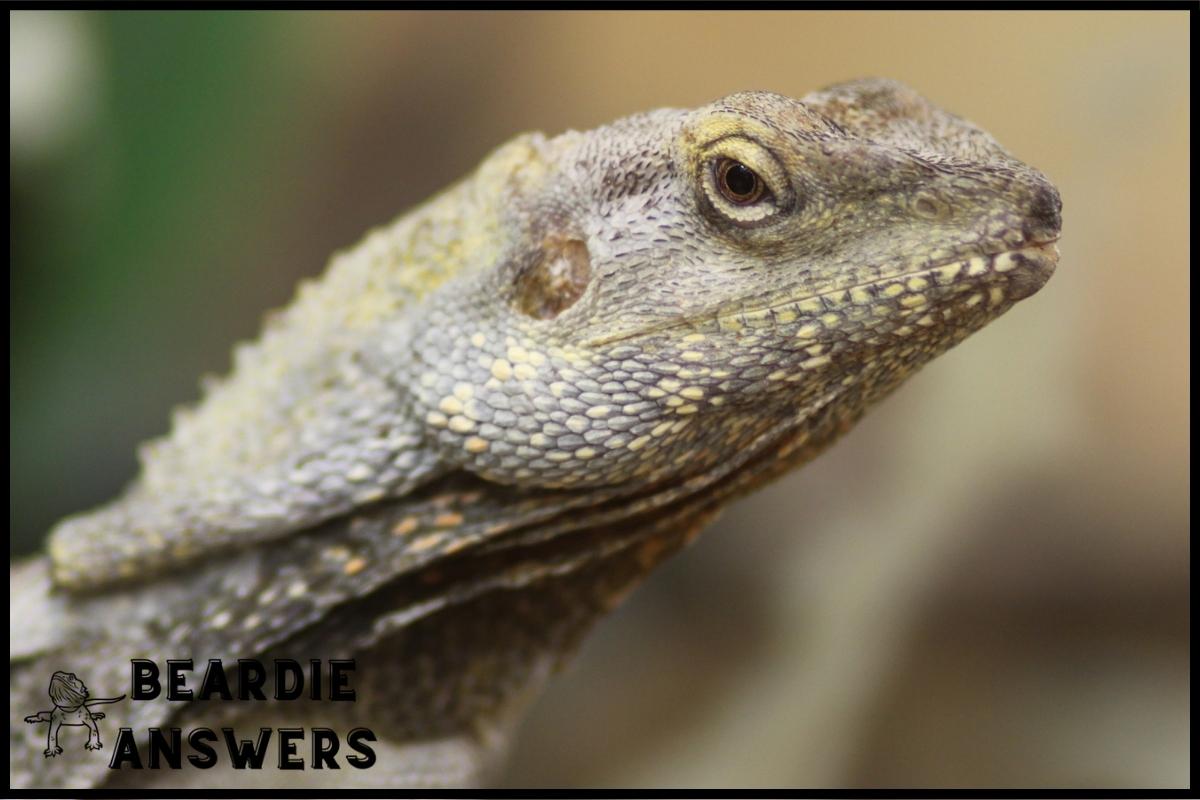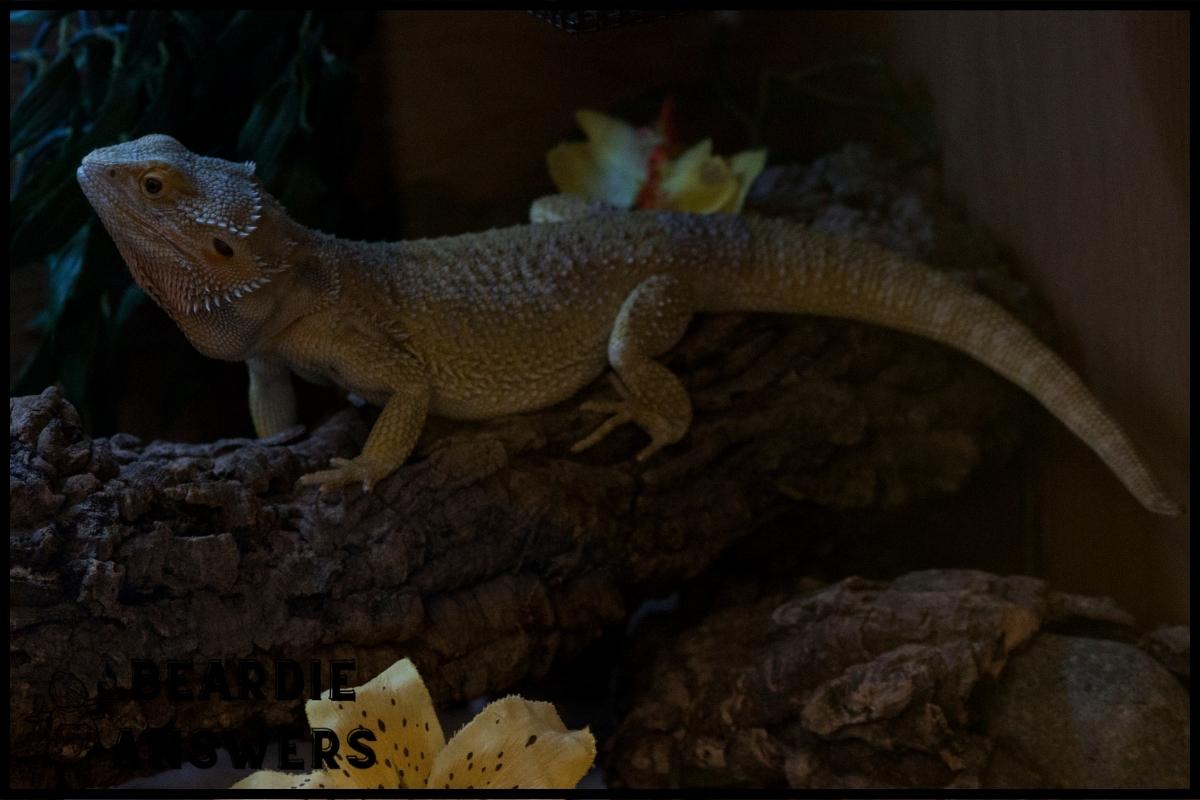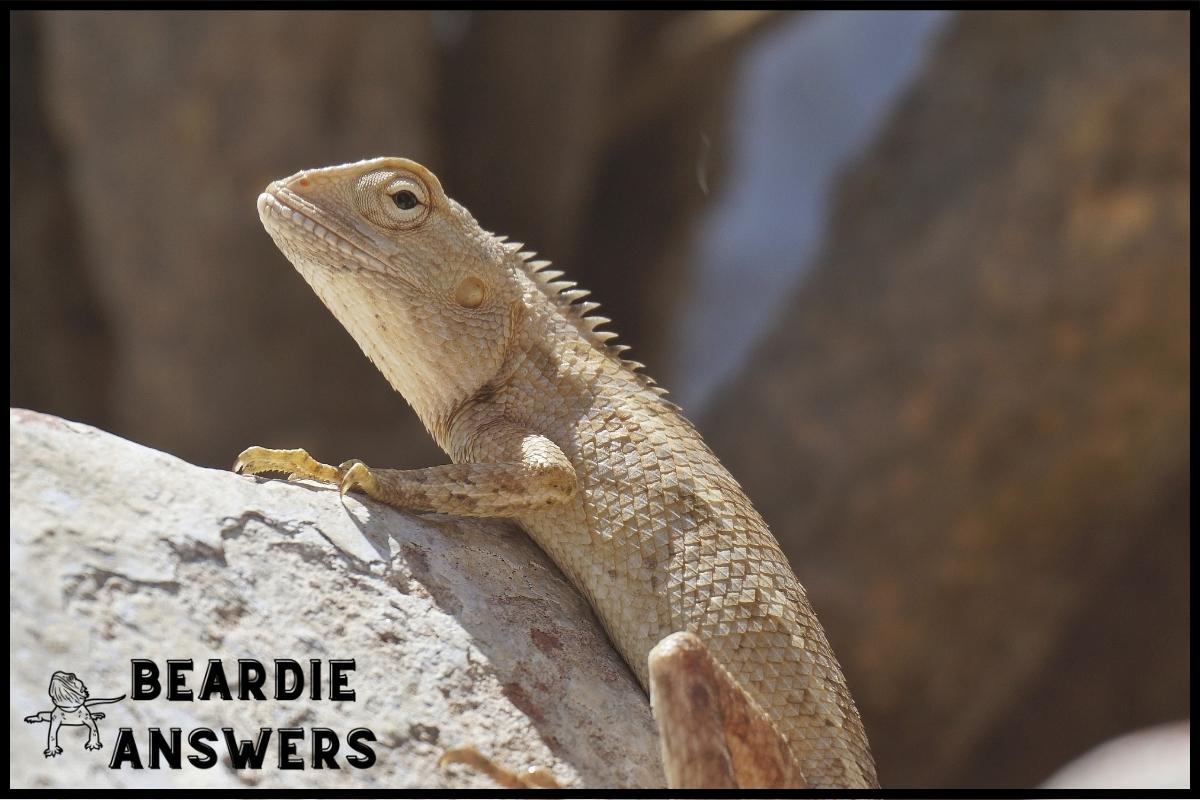The tiger citrus bearded dragon is a popular color morph that is highly sought after by reptile enthusiasts. This morph is characterized by its bright orange and yellow stripes, which resemble those of a tiger. Tiger citrus bearded dragons can be quite active and playful, making them an excellent choice for a pet.
What You'll Learn
- 1 Unique Coloration Of The Tiger Citrus Bearded Dragon
- 2 The Ideal Habitat For A Tiger Citrus Bearded Dragon
- 3 Proper Diet For Optimal Health
- 4 Handling And Bonding With Your Tiger Citrus Bearded Dragon
- 5 Common Health Concerns For Tiger Citrus Bearded Dragons
- 6 Fun Facts About The Tiger Citrus Bearded Dragon
- 7 Conclusion
Unique Coloration Of The Tiger Citrus Bearded Dragon
As the old adage goes, “variety is the spice of life” and that certainly rings true for bearded dragons.
The tiger citrus bearded dragon is a particularly captivating color morph with its vibrant orange and yellow stripes resembling those of a tiger. These striking colors are due to genetic origins that can be traced back to various breeding considerations.
With this in mind, it’s important to consider the ideal habitat for these unique creatures so they can live their best lives possible. To understand what would make an optimal environment, we must first examine the natural habitats of these reptiles…
The Ideal Habitat For A Tiger Citrus Bearded Dragon
A tiger citrus bearded dragon needs an environment that meets their specific requirements in order to thrive. This includes a range of temperature regulation, depending on the time of day and night. During the warmest part of the day, it should be between 95°-110°F (35°-43°C). At night it can drop down to 70°-75°F (21°-24°C), as long as there is no risk of drafts or cold spots.
Additionally, they need access to UVB light which provides them with Vitamin D3 for better health – this should be 10 hours per day during daylight. The best way to ensure proper lighting conditions is by installing a fluorescent tube light fixture above their enclosure and replacing it every 6 months for optimal levels and safety.
The next step in creating an ideal habitat for a tiger citrus bearded dragon is providing the right diet for optimal health.
Proper Diet For Optimal Health
To ensure optimal health for your tiger citrus bearded dragon, it is important to provide the proper diet and nutrition. A balanced diet should include a variety of fresh leafy greens as well as healthy insects such as crickets, waxworms, mealworms, superworms and silkworms. In addition to these sources of protein, supplements containing calcium, phosphorus, vitamin D3 and other vitamins are also necessary in order to maintain a healthy balance:
- Calcium helps promote strong bones and muscle development.
- Phosphorus aids in metabolic processes.
- Vitamin D3 increases absorption of calcium from food sources.
- Vitamins help support digestion and other body functions like immune system response.
Enclosure setup is another key element in providing an ideal habitat for your tiger citrus bearded dragon; this includes temperature regulation via basking lights/heating pads or rocks and UVA/UVB lighting to facilitate their digestive process and prevent metabolic bone disease (MBD).
Additionally, you should provide plenty of hiding spots with foliage so they can feel secure while exploring their environment safely. With all these factors taken into consideration, your dragon will be able to thrive!
Now that you have established the right enclosure set up for your tiger citrus bearded dragon’s needs and provided them with the correct diet for optimal health care, it’s time to move on to handling and bonding with your pet reptile companion!
Handling And Bonding With Your Tiger Citrus Bearded Dragon
It can be intimidating to think about taming and bonding with your tiger citrus bearded dragon. After all, you don’t want to startle or scare them! Fortunately, there are a few helpful tips that will make this process much easier.
To begin with, try talking to your bearded dragon in low tones as you approach their enclosure. When feeding time comes around, it’s important to use tongs or tweezers when handling food so they don’t become too accustomed to being touched by humans. Additionally, using positive reinforcement is an effective way of teaching good behaviors while bonding with your bearded dragon. You can also give them treats like crickets or mealworms for displaying desired behaviors.
When interacting with your tiger citrus bearded dragon, make sure you’re patient and gentle. Avoid any sudden movements which may cause fear or distress; instead, slowly extend your hand into the enclosure to allow your friend some time to adjust before attempting physical contact. If at first they seem apprehensive, back off and provide more space until they approach on their own terms.
It’s also important not to overhandle your new pet- no matter how tempting it may be! Taking these steps will help create a safe environment that encourages trust between you and your furry companion.
To ensure success in forming a strong bond with your beardie, keep up regular interaction and always remain consistent in providing affection through verbal cues (such as speaking softly) and other rewarding gestures like offering treats during training sessions. With patience and careful consideration of their needs, you’ll soon have a thriving relationship with one of the most unique reptiles known today!
Now let’s look at some common health concerns associated with tiger citrus bearded dragons…
Common Health Concerns For Tiger Citrus Bearded Dragons
Let’s talk about two common health concerns for tiger citrus bearded dragons:
1) Parasites
We’ll discuss how to spot parasites and what to feed them to ensure they’re getting the proper nutrition.
2) Nutrition
By properly feeding your tiger citrus bearded dragon, you can prevent many health problems from occurring.
Parasites
When it comes to the health of your tiger citrus bearded dragon, one of the most important things you need to be aware of is parasites.
This can cause a lot of issues for your pet if not taken care of properly, so having preventative care and parasite control measures in place is essential.
This includes regularly checking their stools for any signs of worms or other parasites as well as getting them checked yearly by an exotic vet.
Doing this will help ensure that they stay in good health and don’t suffer from any problems caused by these pesky critters!
Nutrition
When it comes to nutrition for tiger citrus bearded dragons, they have specific needs that should be met in order to ensure their health and wellbeing.
This includes providing a varied diet with plenty of fruits, vegetables, insects, and supplementation as needed.
It’s important not to give them too much protein or fat since this can lead to obesity and other health issues.
To make sure they get all the vitamins and minerals they need from their food, supplementing with additional sources like calcium carbonate is recommended.
Additionally, making sure their dietary diversity is broad enough will help keep them healthy and happy!
Fun Facts About The Tiger Citrus Bearded Dragon
The tiger citrus bearded dragon is a beautiful and exotic creature that has become increasingly popular in recent years. It gets its name from the fact that it has bright orange-yellow stripes similar to those of a tiger, making it both attractive and unique. With proper care and attention, these dragons can make wonderful pets!
Like all other types of bearded dragons, the breeding habits of the tiger citrus variety are quite fascinating. They are solitary animals who only come together during mating season when they will often form small groups or colonies with multiple males fighting for dominance over one female mate. Breeding activity typically takes place at temperatures between 85–95°F (29–35°C).
When kept as pets, temperature control is an important factor to consider with this species. The ideal range should be around 80–90°F (27–32°C) during the day and slightly cooler at night. Additionally, providing access to UVB lighting helps regulate their metabolism and ensure optimal health for your pet.
Conclusion
The tiger citrus bearded dragon is truly a unique and captivating creature. They boast vibrant stripes that look like they could have been painted on by an artist, making them quite the conversation piece!
Despite their small size, these dragons require dedicated care to keep their health in optimal condition. Not only do you need to provide them with the proper habitat, diet, and handling techniques, but it’s also important to be aware of common health concerns for this breed of lizard.
With the right environment and love from their owner, the tiger citrus bearded dragon can make an amazing companion. So if you’re looking for something special and out-of-the-ordinary as a pet, why not give a tiger citrus bearded dragon a try? You won’t regret it!

Hi! My name is Bryan, I am the “one behind the words” here are BeardieAnswers.com. I believe that providing quality care and nutrition is the best way to ensure the health of your pet. Every beardie is special and deserves the best care and attention. If you have questions about your bearded dragon, please don’t hesitate to ask! View My Full Author Page




